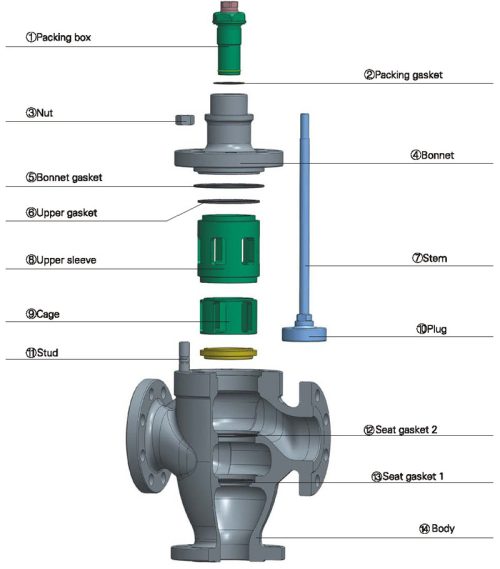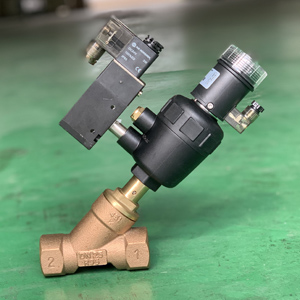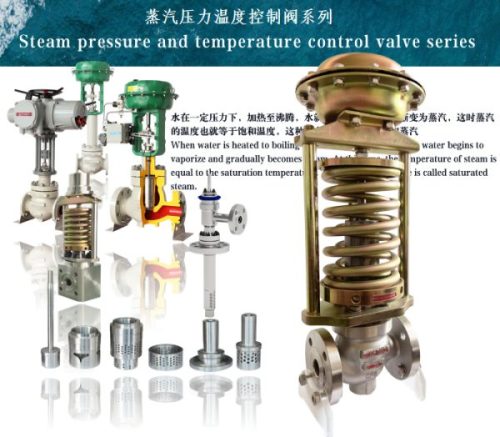Valve positioners play a critical role in ensuring optimal performance and precision in industrial valves, including the Steam Control Valve, steam flow control valve, steam pressure reducing valve, and steam pressure regulating valve. Acting as a vital feedback mechanism, a valve positioner enhances the accuracy of valve operations by adjusting positioning based on control signals. This precision is essential in processes that require meticulous regulation of steam flow and pressure, such as power generation, chemical processing, and manufacturing. By integrating valve positioners, industries can achieve consistent steam management, reduce energy consumption, and minimize operational downtime. This guide explores the functionality, types, and applications of valve positioners, shedding light on their importance in improving efficiency across diverse industrial systems.
Introduction to Valve Positioners
Valve positioners are integral components in industrial systems, designed to enhance the accuracy and responsiveness of control valves. By ensuring precise valve actuation, they play a vital role in processes that demand meticulous control over pressure, temperature, and flow. For pressure regulating valve manufacturers, valve positioners provide the necessary feedback to maintain consistent pressure levels, improving reliability and efficiency. Similarly, they optimize the performance of a temperature regulating valve by refining the control over temperature-sensitive operations. Advanced systems like Pneumatic diaphragm control valves and Pneumatic globe valves rely on valve positioners to achieve superior control and stability in dynamic industrial environments.

Definition
A valve positioner is a device used to ensure accurate control and positioning of valves in industrial systems. It functions as a feedback mechanism that adjusts a valve’s position based on signals received from a control system, ensuring the valve precisely matches the desired setpoint.
Role
Valve positioners play a pivotal role in industrial applications by ensuring the precision and reliability of control valve operations. They fine-tune valve movement in response to control signals, minimizing discrepancies and enabling accurate flow, pressure, and temperature regulation.
Types of Valve Positioners
Pneumatic Valve Positioners
Pneumatic valve positioners are specialized devices designed to improve the performance and precision of pneumatic control valves. They operate by using compressed air to adjust the valve’s position based on control signals, ensuring that the valve accurately matches the desired setpoint. These positioners receive input signals from control systems, compare the valve’s actual position to the target, and make real-time corrections as needed.
Electro-Pneumatic Valve Positioners
Electro-pneumatic valve positioners are advanced devices that merge electric and pneumatic technologies to ensure precise valve control in industrial operations. They function by converting electrical control signals into pneumatic outputs, which then adjust the valve’s position to meet the specified setpoint. This seamless integration allows for improved accuracy, flexibility, and responsiveness compared to purely pneumatic systems.
Digital Valve Positioners
Digital valve positioners are cutting-edge devices that leverage advanced microprocessor technology to deliver precise control and monitoring of valve operations in industrial systems. They function by converting digital signals from control systems into accurate valve positions while continuously monitoring and adjusting to ensure optimal performance. One of their standout features is their enhanced diagnostic capabilities, which allow for real-time monitoring of valve health, reducing downtime and maintenance costs.
Diagnostics
Diagnostics in digital valve positioners revolutionize industrial process control by offering real-time monitoring and advanced insights into valve performance. Through integrated microprocessor technology, these systems detect wear, inefficiencies, or potential faults early, enabling predictive maintenance and minimizing unexpected failures.
Communication protocols
Communication protocols in digital valve positioners are essential for ensuring seamless integration with modern control systems and enabling efficient data exchange. By supporting protocols like HART, FOUNDATION Fieldbus, and Profibus, these devices facilitate real-time communication between field instruments and centralized control systems. This interoperability unlocks advanced features such as remote configuration, precise monitoring, and data-driven diagnostics.
Remote monitoring
Remote monitoring in digital valve positioners transforms valve management by granting operators real-time access to crucial performance data from remote locations. These capabilities enable precise analysis and swift decision-making, ensuring valves operate at peak efficiency without the need for constant on-site intervention. By identifying irregularities early, remote monitoring aids in predictive maintenance, significantly cutting maintenance costs and preventing unexpected downtime.

Working Principle of Valve Positioners
Valve positioners operate by receiving control signals from a process control system and adjusting the actuator’s position to achieve the desired valve opening. Using feedback mechanisms, they continuously monitor the valve’s position and compare it to the input signal, making real-time corrections to maintain accuracy.
Industrial Applications of Valve Positioners
Valve positioners play a pivotal role in optimizing control systems across a range of industrial applications, ensuring precision, efficiency, and reliability. In the chemical processing industry, these devices regulate complex flow rates to maintain consistency and safety in critical processes. The oil and gas sector relies on valve positioners to handle high-pressure environments and ensure seamless operations in upstream, midstream, and downstream processes. Meanwhile, in power generation, they enhance the responsiveness of control valves, enabling accurate adjustments to steam and water flow in turbines and boilers. By integrating advanced feedback and diagnostics, valve positioners not only improve control accuracy but also reduce downtime, driving operational excellence across these demanding industries.
Chemical and Petrochemical Industries
Control valve positioners are integral to the chemical and petrochemical industries, where precision and reliability in process control are non-negotiable. These devices ensure accurate valve positioning, critical for regulating flow rates, pressures, and temperatures in complex chemical reactions. By enabling real-time adjustments, they maintain operational stability even under challenging conditions, reducing the risk of process disruptions. Their advanced diagnostics and feedback mechanisms enhance safety by identifying potential system irregularities before they escalate.
Power Generation Facilities
Control valve positioners play a vital role in power generation facilities by delivering precise control over steam, water, and other critical fluids essential for efficient energy production. These devices ensure that valves respond accurately to control signals, enabling fine-tuned adjustments that optimize turbine performance and maintain boiler efficiency. By continuously monitoring and correcting valve positions, positioners reduce operational downtime, enhance equipment reliability, and support predictive maintenance strategies. Furthermore, their ability to handle high-pressure and high-temperature conditions ensures safety compliance while maximizing plant output.
節(jié)閥白底800x800-e1735112497864.jpg)
Water Treatment Plants
Control valve positioners are key to the efficient operation of water treatment plants, where maintaining precise control over flow rates and pressures is essential. These devices allow valves to respond accurately to system demands, ensuring consistent regulation of water and chemicals used throughout the treatment process. By providing real-time adjustments and feedback, positioners help optimize filtration, disinfection, and distribution systems, ultimately maintaining water quality standards. Additionally, their ability to improve reliability reduces unplanned shutdowns, streamlines maintenance efforts, and supports regulatory compliance, making them an indispensable tool for ensuring the sustainability and performance of modern water treatment facilities.
Benefits of Using a Valve Positioner
Valve positioners provide remarkable benefits by significantly improving process control and operational efficiency across industrial applications. By ensuring precise valve positioning, they allow for accurate regulation of flow, pressure, and temperature, which is critical for maintaining optimal system performance. This precision reduces the likelihood of process fluctuations, thereby enhancing operational stability and minimizing energy consumption. Additionally, valve positioners contribute to cost savings by reducing wear and tear on valve components, extending their lifespan and lowering maintenance requirements. Their advanced diagnostic capabilities further aid in preventive maintenance, detecting and addressing potential issues before they escalate.
Maintenance and Troubleshooting of Valve Positioners
Proper maintenance and troubleshooting of valve positioners are critical for ensuring their optimal performance and longevity in demanding industrial environments. Regular inspections should focus on verifying signal accuracy, checking for physical damage, and assessing actuator alignment and responsiveness. Routine cleaning of components to prevent the buildup of debris and contaminants is also essential to maintain functionality. When troubleshooting, techniques such as system diagnostics and performance testing can identify issues like calibration errors, signal mismatches, or wear on moving parts. Addressing these issues promptly prevents unexpected failures, minimizes downtime, and safeguards overall process reliability. By adhering to systematic maintenance schedules and utilizing advanced diagnostic tools, operators can not only extend the lifespan of valve positioners but also enhance their contribution to efficient and consistent plant operations.

Choosing the Right Valve Positioner for Your Application
Selecting the right valve positioner for your application requires careful evaluation of several critical factors. First, consider the type of control valve you are using—whether it’s a pneumatic control valve, electric globe valve, or another configuration—as this determines the compatibility of the positioner. Environmental conditions, such as temperature, pressure, and corrosive exposure, should also guide your choice to ensure durability and reliability. Additionally, industry-specific requirements play a vital role; for instance, chemical processing may demand high precision, while oil and gas applications might require robust solutions for high-pressure environments. Compatibility with existing systems and ease of integration are crucial for minimizing operational disruptions. Advanced features like digital communication and diagnostics further enhance performance by enabling real-time monitoring and predictive maintenance, making them a valuable consideration.
Environment
Environmental conditions play a crucial role when selecting the appropriate valve positioner for a specific application. Factors such as extreme temperatures, high humidity, and exposure to corrosive or abrasive substances can significantly influence the performance and longevity of these devices. For example, in highly corrosive environments, positioners made from durable materials like stainless steel or those with specialized coatings are essential to prevent degradation. Similarly, designs capable of withstanding wide temperature variations ensure reliable operation in challenging climates.
Signal type
The signal type is a key factor in selecting the right valve positioner, as it directly influences compatibility and overall system performance. Pneumatic signals, for instance, are simple and reliable, often preferred in environments where electrical interference is a concern but may lack the precision and flexibility of more advanced options. Analog signals, such as 4-20 mA, offer greater accuracy and integration with control systems, making them suitable for more complex industrial settings. Digital signals, including fieldbus protocols, provide advanced diagnostics, two-way communication, and enhanced control capabilities, making them ideal for modern, data-driven operations, though they require specialized expertise and infrastructure.
Industry requirements
Industry requirements are a critical factor in the selection of valve positioners, as different sectors operate under stringent standards and regulations tailored to their unique processes. For example, the chemical and petrochemical industries often mandate compliance with ATEX or SIL certifications to address explosive atmospheres and functional safety. The food and beverage sector may prioritize hygienic design and FDA-approved materials, ensuring contamination-free operations. Similarly, water treatment facilities require positioners that meet environmental protection and corrosion resistance standards. Adhering to these specific certifications guarantees not only operational safety and efficiency but also regulatory compliance, minimizing the risk of penalties and maintaining the reliability of processes in demanding industrial environments.
Future Trends in Valve Positioner Technology
Future trends in valve positioner technology are set to revolutionize industrial applications through the integration of emerging technologies like IoT, advanced diagnostics, and AI-driven predictive maintenance. IoT-enabled positioners allow seamless connectivity and remote monitoring, giving operators real-time insights into valve performance and system health. Advanced diagnostics enhance fault detection by identifying inefficiencies or potential issues before they impact operations. Meanwhile, AI-powered predictive maintenance provides data-driven forecasts, allowing for proactive interventions that extend equipment lifespan and reduce downtime. Together, these innovations are paving the way for smarter, more reliable, and highly automated solutions, enabling industries to achieve unparalleled levels of efficiency and operational excellence.

FAQ valve positioner
Q1: What role does a valve positioner play in the operation of an electric globe valve?
A: A valve positioner is crucial for enhancing the precision and responsiveness of an electric globe valve in industrial systems. By ensuring the actuator accurately adjusts the valve’s position in response to input signals, the positioner helps maintain optimal flow control. This is particularly important in applications requiring tight tolerances, as the positioner ensures the valve operates efficiently under changing process conditions.
Q2: How does a valve positioner improve the performance of a pneumatic control valve?
A: A valve positioner enhances the performance of a pneumatic control valve by translating control signals into precise actuator movements. This ensures consistent and accurate valve positioning, even in dynamic environments with fluctuating system pressures or flow rates. By minimizing hysteresis and reducing lag time, the positioner improves the overall efficiency and reliability of pneumatic control systems.
Q3: Are valve positioners compatible with electric control valves, and how do they optimize functionality?
A: Yes, valve positioners are compatible with electric control valves and play a significant role in optimizing their functionality. By providing accurate feedback on valve position and ensuring seamless integration with control systems, the positioner allows for precise modulation of flow. Advanced digital positioners can also offer real-time diagnostics for electric control valves, enabling predictive maintenance and enhancing system reliability in high-demand industrial applications.
Conclusion valve positioner
Valve positioners are essential for achieving precision, reliability, and efficiency in industrial valve operations. They ensure accurate control across various applications, from managing the flow rate in an electric control setup to maintaining stability in a Self-operated pressure regulating valve. Whether integrated with a Self-operated regulating valve or enhancing the performance of a Self-operated control valve, these devices provide crucial feedback and streamline processes. By selecting the right valve positioner with considerations for signal type, environmental factors, and compliance with industry standards, industries can optimize system performance and maintain operational excellence. This comprehensive guide underscores their indispensable role in modern industrial applications, paving the way for smarter, more efficient control systems.

